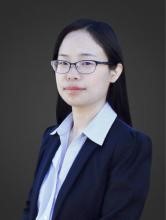
"The Water-Energy Nexus: Microbial Photoelectrochemical Conversion for Solar Fuel Generation and Wastewater Treatment"
The water-energy nexus is rooted in the fact that water and energy are interdependent systems. All stages of energy production utilize water. Likewise, energy is necessary to desalinate, treat, and distribute clean water. Inevitable changes related to population growth, weather, and the environment affect the relationship between our natural resources and energy infrastructure. These challenges induce vulnerabilities within our nation’s population and increase the urgency for action. Therefore, an integrated approach that addresses both the challenges and opportunities of the water-energy nexus carries great potential in providing solutions for these impending circumstances.
Artificial photosynthesis (APS) mimics nature by photoelectrochemically generating clean energy from water and sunlight. Challenges faced by current APS systems involve high costs, low efficiencies, and short lifetimes. Furthermore, most APS devices rely on clean water sources, limiting their potential for impact. In this study, we developed an inexpensive, nanostructured black silicon photocathode exhibiting a “swiss-cheese” interface coupled to an electroactive microbial bioanode that efficiently produces clean energy from real brewery wastewater continuously for over 90 hours (Figure 1). Sourcing brewery wastewater reduces associated costs and provides a microbe-driven voltage boost that increases device efficiency in the absence of an external bias. Generating clean energy from concurrent wastewater treatment provides ideal solutions to the challenges faced by our nation and its energy infrastructure.
Biosketch
Prior to becoming an Assistant Professor at San Diego State University, Dr. Jing Gu built an extensive background in solar fuel generation and interfacial charge transfer processes while completing her Ph.D. in chemistry at Tulane University and postdoctoral fellowships at Princeton University and the National Renewable Energy Laboratory. Now, Dr. Gu and her research team investigate photoelectrochemical solar energy conversion and storage in solar fuels. This approach is similar to the natural photosynthetic process and thus, has been dubbed, “artificial photosynthesis.” The ultimate goal of the efforts discussed herein involve developing a standalone microbial photoelectrochemical cell, in which water reduction and oxidation reactions readily proceed under a photoinduced bias (ideally 1 sun) in the absence of an external electrical source.
